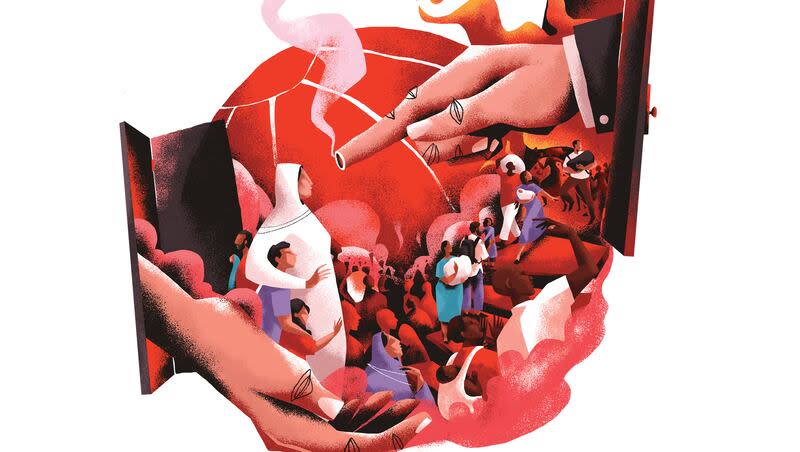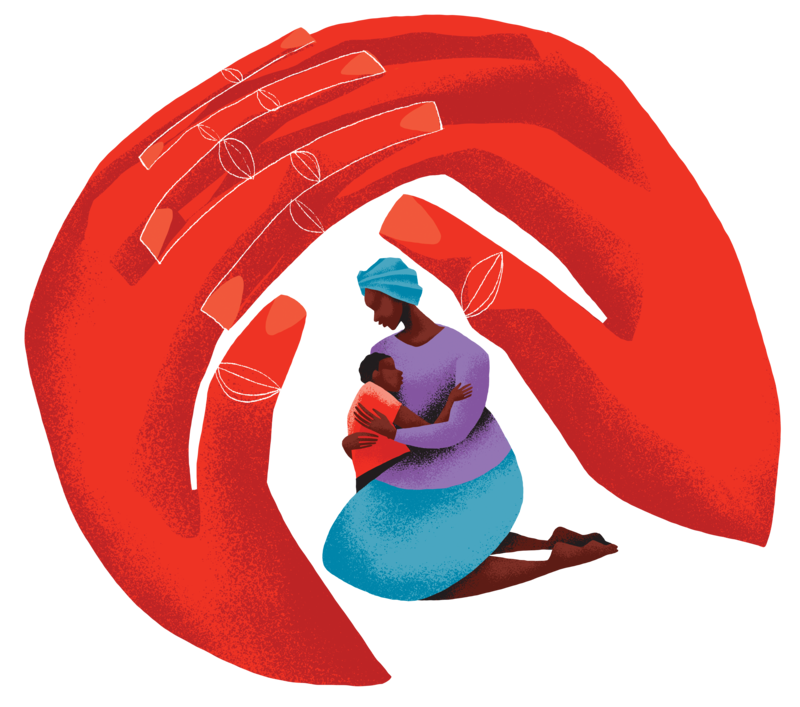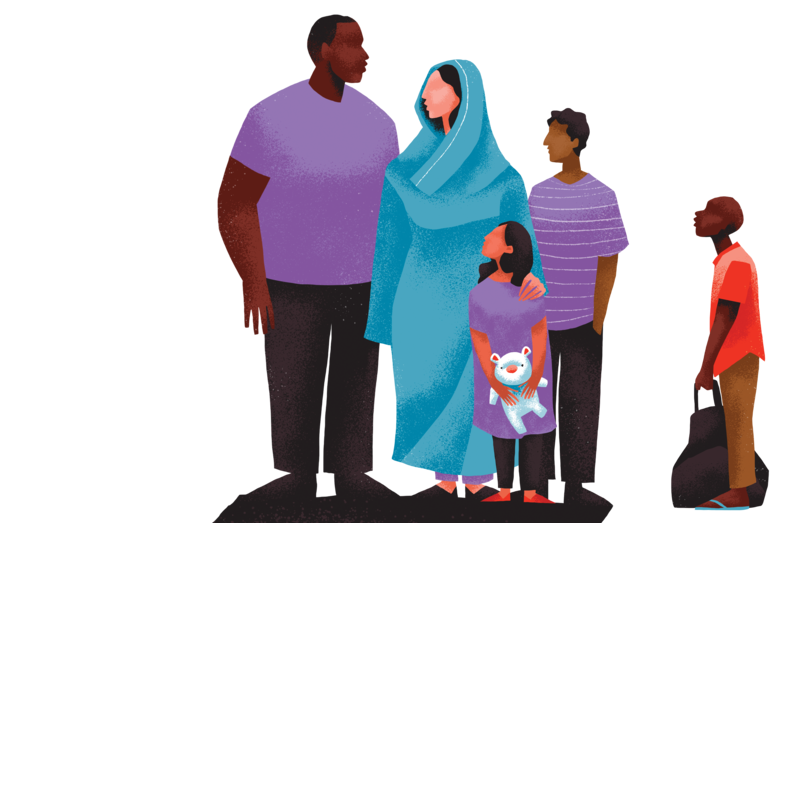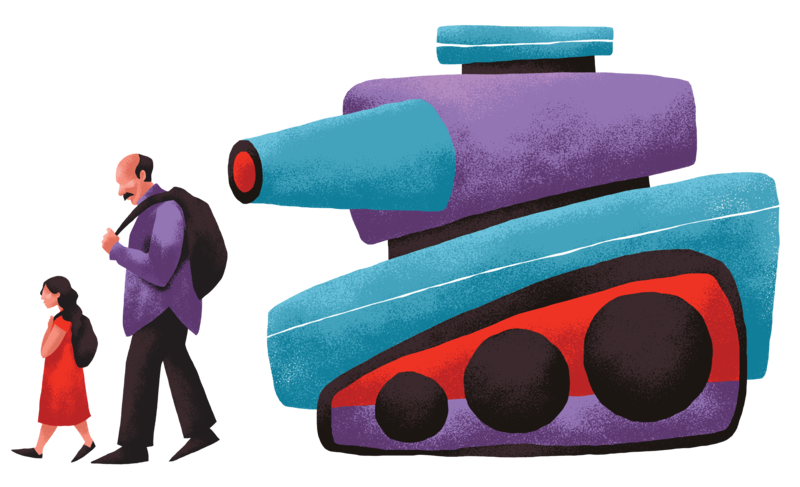Refugee planet

More people are being forced from their homes today than ever before. Those who flee their countries become refugees, joining a global diaspora so vast it is difficult to comprehend their numbers. The phenomenon is as old as the idea of a country, from Babylon’s conquest of ancient Israel to Spain’s expulsion of Muslims and the ongoing implosion of Venezuela’s economy. But today’s global crisis is unprecedented in scope and impact, presenting new challenges for political leaders, humanitarian organizations and people of faith. How did we get to this point? Who is leaving which countries, and why? And who is taking them in?
114 million people
That’s how many have been forced from their homes by violence, persecution or natural disasters — roughly 1 in every 73 humans, including 5.6 million in 2023 alone. If they formed a country, it would be 14th in population, behind Japan and the Philippines but far ahead of Turkey and Germany. More than half come from Syria, Afghanistan and Ukraine. Most remain in their home countries. Another 21.5 million have been displaced annually by natural disasters since 2008.
3X in 15 years
The number of refugees — those who have crossed an international border — has nearly tripled since 2009, increasing by 293 percent. According to the United Nations High Commission on Refugees, they number 30.5 million, stuck between the countries that forced them out and those reluctant to give them a home. That’s enough to match the population of Texas.

1951 refugee convention
This international law now binds 146 signatory nations that must protect refugees and give asylum when merited. Crafted after millions were displaced by two world wars — including Jews fleeing the Holocaust who were turned back to sea from literal safe harbors — the convention dictates that refugees cannot be returned to a country where they face serious threats against their lives. The 1967 Protocol eliminated geographic and time limits to protect all refugees.

80% of refugees, 19% of income
Four out of five refugees are hosted by countries that collectively net less than a fifth of the world’s income, mostly developing nations located near the source countries. Turkey and Iran top the list with 3.6 million and 3.4 million, respectively, followed by Colombia, Germany and Pakistan. The United States hosts 389,300 refugees.
“We wanted to rebuild our lives, that was all. … We lost our home, which means the familiarity of daily life. We lost our occupation, which means the confidence that we are of some use in this world. We lost our language, which means the naturalness of reactions, the simplicity of gestures, the unaffected expression of feelings.” —Hannah Arendt, historian, philosopher, political theorist and refugee from Hitler’s Germany
3 wars
These recent conflicts have displaced almost 2 million people. Syria’s civil war, which started in 2011, launched an exodus of at least 6.5 million; 6.8 million more remain displaced within that country. Another 11.6 million fled Ukraine after Russia’s invasion in 2022. And 1.9 million Palestinians have been pushed out of their homes in the Gaza Strip by Israel’s military response to Hamas’ attack on Israel last October.

880,000 people
That’s the population of Kutupalong, the world’s largest refugee camp — about the same size as Indianapolis — a slum of bamboo huts packed onto five square miles of former woodland in Bangladesh. Most are Rohingya Muslims who fled neighboring Myanmar in 2017, escaping an ethnic cleansing campaign against their religious and ethnic minority. Like the 6.6 million who shelter in similar camps around the world, they deal with hunger, crime, language barriers, unemployment, outbreaks of illness and limited access to medical care.
21.5 million per year
That’s the average number of people displaced by natural disasters such as earthquakes, floods, droughts and drought-induced famines since 2008, according to the United Nations. The devastating impact is often amplified by rapid urbanization and population growth in hazard-prone areas, now multiplied by the increasing pace and severity of weather-related events.

Mostly kids
More than half of all refugees are minors. Child refugees are at high risk for mental health issues including post-traumatic stress disorder, anxiety, depression, and other emotional and behavioral issues which can cause disturbed sleep, inattention and social withdrawals, according to the Denver Journal of International Law & Policy.

This story appears in the April 2024 issue of Deseret Magazine. Learn more about how to subscribe.

